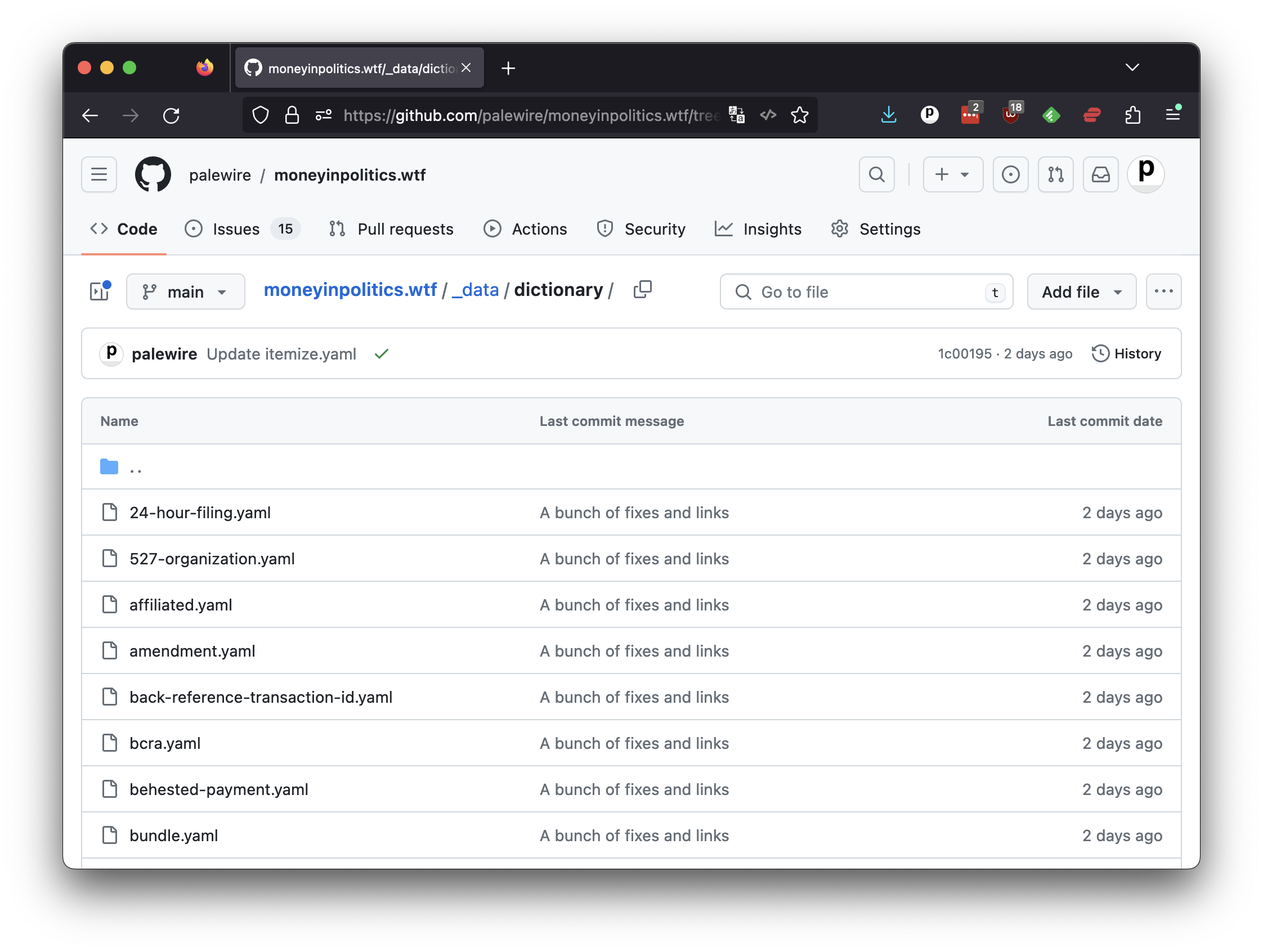4. YAML¶
Once you’ve entered the dictionary folder, you should see a list of files. Each one contains a word’s definition, along with other metadata describing it like whether it is a noun or a verb.
Note that each file’s name ends with .yaml. That tells computers that the file is expected to contain data structured in YAML format.
YAML is a data serialization language. It is used to represent data structures in a human-readable and easy-to-write format. YAML stands for “YAML Ain’t Markup Language,” because it does not wrap data in surrounding tags like HTML or XML (and because nerds like inventing silly acronyms.)
YAML is often used for configuration files, data storage and communication between different systems. Here is a simple example:
# This is a comment
# This is a string
name: Alice
# This is an integer
age: 25
# This is a list
colors:
- red
- green
- blue
# This is a nested object
address:
street: 123 Main St.
city: Anytown
state: CA
zip: 99999
The moneyinpolitics.wtf repository has its own custom data structure expressed in YAML. You can see an example of a fully entered definition by clicking on any file in the list, such as contribution.yaml
You can see that several pieces of metadata — like the word and the type — are at the top. At the bottom you can see a list of definitions, including examples of reuse, entered in the definition_list attribute.
When the site is published, the data stored in YAML files are rendered into an HTML template and served to the reader. You can find this definition at moneyinpolitics.wtf/contribution/. Note that the slug at the end of the URL matches the name of the file.
Next you will find a definition that would benefit from your contribution.


